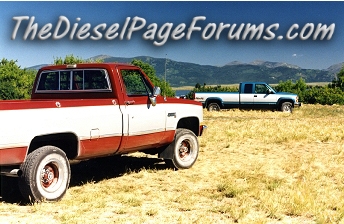 deciding between 4 or 5 inch exhaust
deciding between 4 or 5 inch exhaust
I'm planning on putting a bigger exhaust on my lbz. I've heard that a 5 inch straight pipe is so big it doesn't have enough backpressure to spool the turbo. I am planning on running a straight pipe, or maybe a full flow "muffler". I have heard the 5 inch screeches at highway speed at WOT. I don't plan on adding power, and I'm not pulling anything but a boat. Anyone have suggestions? Thanks!
1991 Chevrolet Silverado 3500, 6.2L. 125,000 miles -Sold
2007 Chevrolet Silverado LBZ - R.I.P
2001 Chevrolet Silverado LB7-- Sold
2011 GMC Sierra, LML- 39,000 miles. All stock






 Reply With Quote
Reply With Quote






